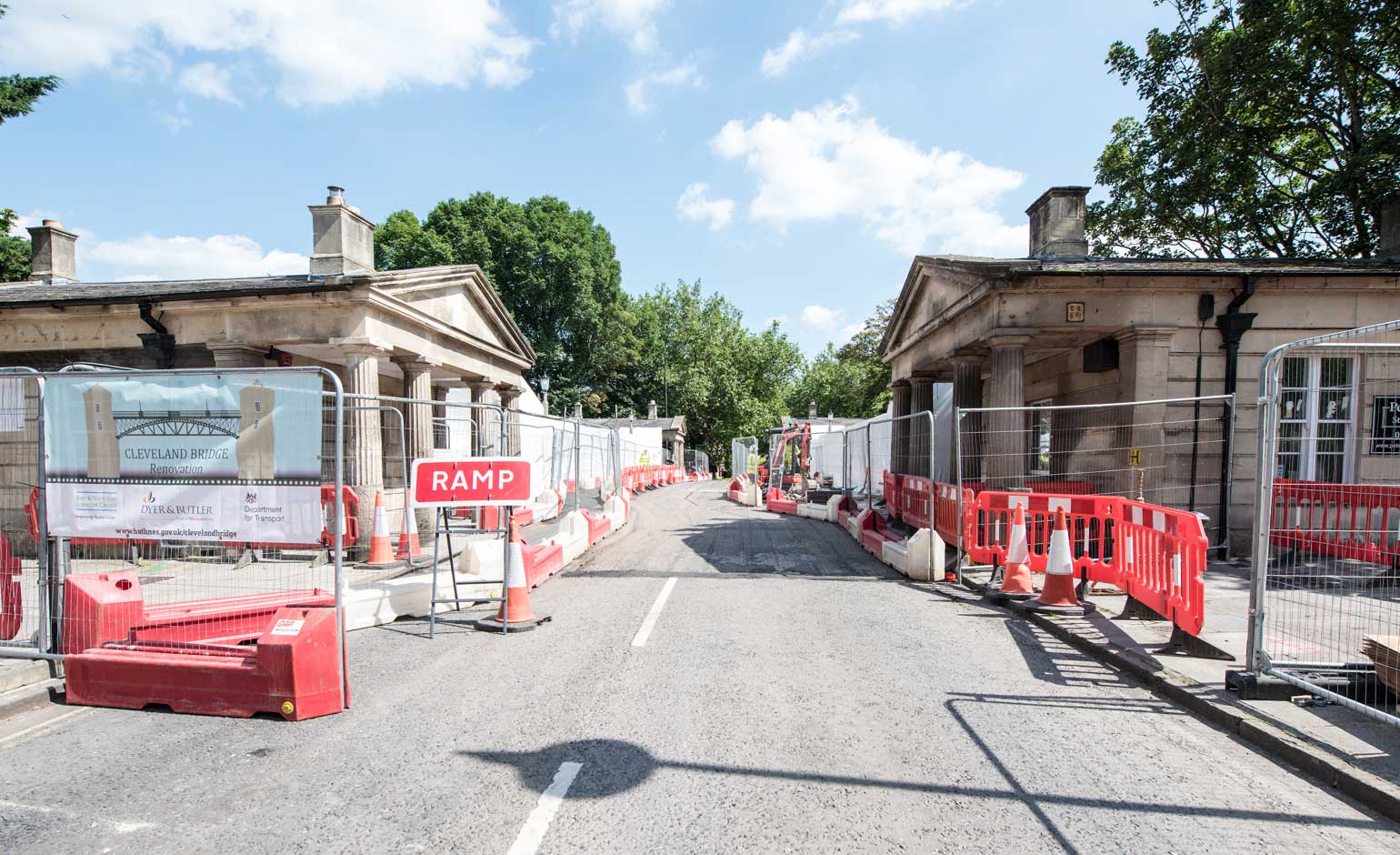The historic Cleveland Bridge in Bath has finally reopened to two-way traffic after being closed for more than a year following the discovery of corrosion in the structure.

Cleveland Bridge in Bath during the repair works | Photo © B&NES Council
Traffic lights and traffic management was removed on Sunday evening, 2nd October, with a weight monitoring system put in place to enforce an ongoing 18-tonne weight limit.
ANPR cameras have also been installed to capture the details of any vehicles in breach of the weight limit.
Engineers have also installed the monitoring system which will provide ongoing reassurance that the bridge remains safe as it is brought back into service.
This follows a recommendation for a staged approach to reopening the Grade II* listed bridge.
Initially, the 18-tonne temporary load restriction will remain and if monitoring shows there are no issues, the bridge could technically and safely open to normal traffic loads of 44 tonnes.
A passive support system could be designed to provide longer-term surety.
Councillor Manda Rigby, cabinet member for Transport, said: “As ever, our prime motivation in doing these works on the historic bridge is to ensure that safety comes first.
“I am pleased to see that it is now possible to open to two-way traffic with an 18 tonne weight limit, the traffic signals were removed on Sunday evening, and monitoring and enforcement equipment has been fitted.
“The bridge load will be closely monitored and we have installed ANPR cameras to capture the details of any vehicles breaching the weight restriction.
“Drivers that do flout the restriction are being warned that they could face prosecution brought by Trading Standards or the Police or via a Fixed Penalty Notice. It is a criminal offence to contravene a traffic regulation order.
“Anyone using the bridge will still see some final masonry works going on now the scaffold has been taken down as part of its refurbishment and I really want to thank businesses and residents living on and near Cleveland Bridge for their patience during this complex refurbishment of a 200-year-old structure.”
Over the spring and summer, engineers carried out assessments, as well as further computer modelling, following the discovery of unexpected corrosion in hanger bars at the start of the year.
More accurate information on the degree of section loss to the worst affected group of bars became available using castings of the bars.
A detailed report said an intelligent monitoring system would allow the structure to be brought back into service following a period of monitoring under test loads.
Using the monitoring system would provide early detection of the onset of changes in the characteristic ‘fingerprint’ response of the structure and enable the introduction of control measures to ensure public safety in a considered, timely and measured way.
Masonry works, which couldn’t be completed while scaffolding was in place, will continue underneath the bridge for a number of weeks and the contractor’s works compound will be scaled back.



